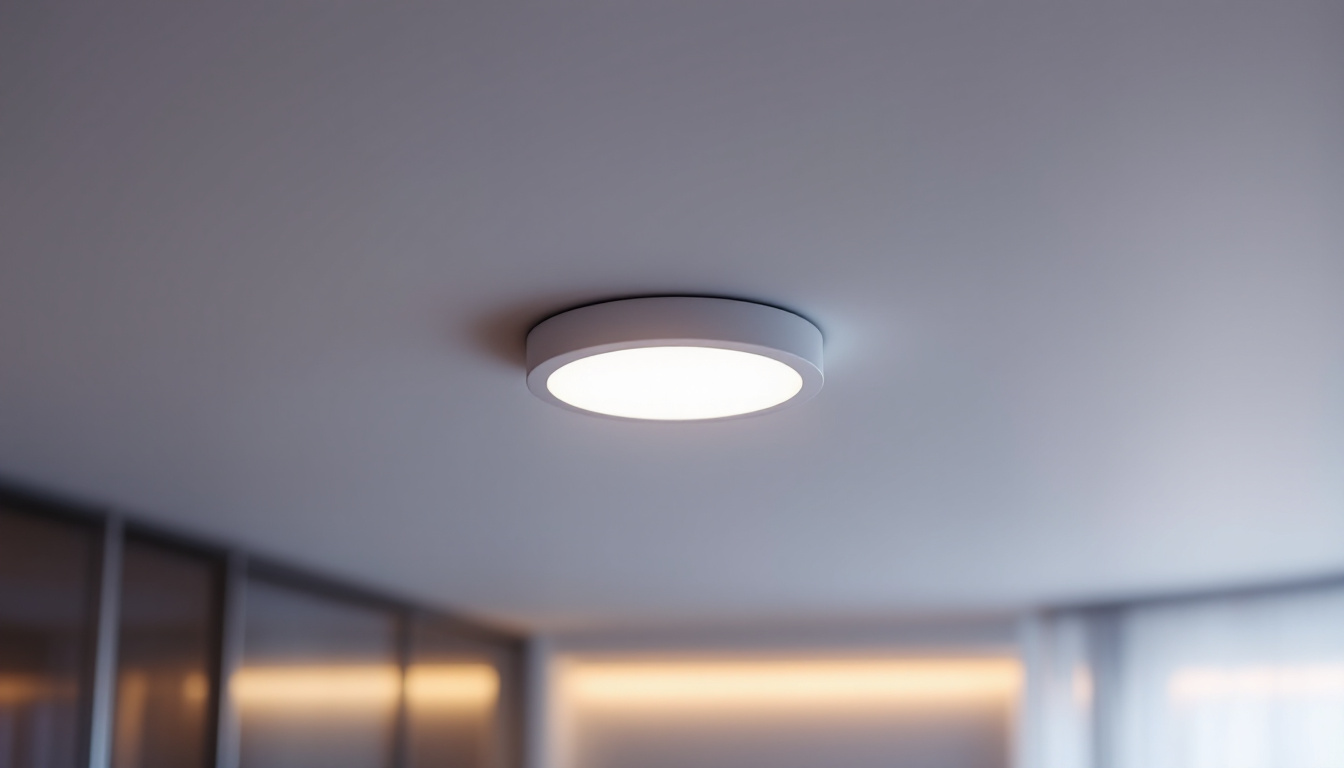
Wall lighting plays a crucial role in both residential and commercial spaces, influencing ambiance, functionality, and energy efficiency. For lighting contractors, selecting and installing the right wall light bulbs is more than just a technical task—it directly impacts client satisfaction, safety, and long-term project success. Despite the seemingly straightforward nature of wall light bulbs, many contractors encounter recurring pitfalls that can compromise lighting quality and durability.
Understanding these common mistakes is essential for contractors aiming to deliver superior lighting solutions. This article explores frequent errors made during the selection, installation, and maintenance of wall light bulbs, providing actionable insights to enhance professionalism and project outcomes.
One of the most significant factors to consider when selecting wall light bulbs is the color temperature, which can dramatically affect the mood of a space. For instance, cooler temperatures (around 5000K) are often preferred in workspaces as they mimic daylight and enhance concentration, while warmer tones (around 2700K to 3000K) create a cozy and inviting atmosphere, ideal for living areas and bedrooms. Additionally, the color rendering index (CRI) of a bulb is essential in ensuring that colors appear true and vibrant, which is particularly important in settings like art galleries or retail spaces where product presentation is key.
Moreover, energy efficiency should not be overlooked in the selection process. With the rise of LED technology, contractors have a plethora of options that not only consume less power but also boast longer lifespans compared to traditional incandescent bulbs. This shift not only contributes to lower energy bills for clients but also aligns with sustainable building practices, which are increasingly important in today’s environmentally conscious market. By staying informed about the latest advancements in lighting technology, contractors can offer solutions that are both cost-effective and eco-friendly, thereby enhancing their reputation as knowledgeable professionals in the field.
One of the most prevalent mistakes lighting contractors make is selecting bulbs incompatible with the wall fixture. Wall sconces and other wall-mounted fixtures often have specific requirements regarding bulb shape, size, wattage, and base type. For example, using a bulb with a standard E26 base in a fixture designed for candelabra E12 bases can lead to improper fitting or damage.
Moreover, some fixtures are designed exclusively for LED bulbs or halogen bulbs due to heat dissipation needs. Installing an incompatible bulb type can cause overheating, reducing fixture lifespan and posing fire hazards. Contractors must carefully review fixture specifications and manufacturer guidelines before selecting bulbs. Additionally, the physical design of the fixture can influence bulb choice; for instance, enclosed fixtures may restrict airflow, necessitating bulbs that operate at lower temperatures to prevent overheating and potential fixture failure.
Another aspect to consider is the dimming capabilities of both the fixture and the bulb. Not all bulbs are compatible with dimmer switches, and using a non-dimmable bulb in a dimmable fixture can lead to flickering or even damage to the bulb. Therefore, understanding the full compatibility of the fixture with various bulb types, including their electrical characteristics, is crucial for ensuring both safety and functionality in lighting design.
Wall lighting often serves both decorative and functional purposes. Choosing bulbs without considering lumen output and color temperature can result in inadequate illumination or an unappealing atmosphere. For instance, a wall sconce in a hallway requires sufficient brightness to ensure safety, while bedroom wall lights may benefit from warmer color temperatures to create a cozy environment.
Ignoring these factors can lead to client dissatisfaction or necessitate costly bulb replacements. Lighting contractors should evaluate the intended use of the space and select bulbs that balance brightness and color temperature appropriately. Furthermore, the interplay between light output and color temperature can dramatically affect how colors and textures are perceived within a room. A cooler light can make a space feel more vibrant and energetic, while warmer tones can soften the ambiance, making it more inviting. Understanding the psychological effects of light can help contractors make informed choices that enhance the overall design and functionality of a space.
Additionally, it’s essential to consider the context of the lighting within the broader design scheme. For example, in an art gallery, the color temperature of the bulbs can influence how artwork is viewed, potentially altering the perception of colors and details. Therefore, contractors should not only focus on the technical specifications of the bulbs but also how they interact with the overall aesthetic and purpose of the space, ensuring that the lighting complements and enhances the environment rather than detracting from it.
Wall light installations often involve multiple fixtures connected to a single circuit. A common oversight is failing to calculate the total electrical load, which can exceed circuit capacity. Overloading circuits not only causes frequent tripping of breakers but also risks electrical fires. This is particularly concerning in residential settings where families rely on consistent lighting for safety and comfort. Inadequate planning can lead to not just inconvenience, but also significant safety hazards.
Contractors should perform load calculations based on the wattage of all connected bulbs and ensure the circuit can safely handle the total demand. This step is vital when retrofitting older buildings where wiring may not support modern lighting loads. Additionally, it is essential to consider the cumulative effect of other devices on the same circuit, as appliances and electronics can contribute to the overall load. By adhering to the National Electrical Code (NEC) guidelines, contractors can mitigate risks and ensure that installations are both safe and compliant with current standards.
Wall light bulbs must be installed correctly to ensure optimal performance and longevity. Improperly seated bulbs or incorrect orientation can cause flickering, uneven light distribution, or premature bulb failure. For example, some LED bulbs require specific positioning to activate built-in heat sinks or directional features. This not only affects the aesthetic quality of the lighting but can also lead to increased energy consumption, as bulbs may work harder to compensate for poor installation.
Contractors should follow manufacturer instructions meticulously, double-checking bulb seating and orientation during installation. Using torque-controlled tools can help avoid over-tightening, which can damage bulbs or sockets. Furthermore, it’s beneficial to educate clients about the importance of regular maintenance checks, including inspecting bulbs for signs of wear or improper functioning. This proactive approach can extend the lifespan of the lighting fixtures and enhance the overall efficiency of the electrical system in the home.
Despite the clear advantages of LED technology—including lower energy consumption, longer lifespan, and reduced heat output—some contractors continue to specify incandescent or halogen bulbs for wall fixtures. This oversight not only increases operational costs for clients but also conflicts with growing sustainability standards in the industry.
Adopting LED bulbs for wall lighting is a best practice that benefits both contractors and clients. LEDs reduce maintenance frequency and energy bills, enhancing overall project value. Educating clients about these benefits can also position contractors as knowledgeable and environmentally responsible professionals.
Dimming capability is a sought-after feature for wall lighting, allowing users to adjust ambiance and save energy. However, not all bulbs are compatible with dimmer switches, especially older or generic LED models. Installing non-dimmable bulbs on dimmer circuits can cause flickering, buzzing, or bulb damage.
Contractors should verify dimmer compatibility when selecting bulbs and switches, opting for bulbs specifically rated for dimming. This attention to detail ensures smooth operation and enhances client satisfaction.
Wall light bulbs, particularly halogen and incandescent types, generate significant heat. Installing such bulbs in enclosed or poorly ventilated wall fixtures without considering heat dissipation can lead to overheating, fixture damage, and fire hazards.
Contractors must adhere to manufacturer guidelines regarding maximum wattage and fixture enclosure types. Using LED bulbs, which emit less heat, can mitigate these risks, but proper installation practices remain essential.
Compliance with local electrical codes is non-negotiable for safety and legal reasons. Lighting contractors sometimes overlook code requirements related to grounding, wiring methods, and fixture placement, especially in renovation projects.
Regularly updating knowledge of regional codes and incorporating them into project planning prevents costly rework and liability issues. Engaging with local inspectors early in the project can also facilitate smoother approvals.
Choosing inexpensive, low-quality bulbs may seem cost-effective initially but often results in frequent replacements and client complaints. Poor-quality bulbs can suffer from inconsistent light output, color shifts over time, and shorter lifespans.
Contractors should prioritize reputable brands and verify bulb specifications against fixture requirements. Investing in quality upfront reduces maintenance calls and enhances reputation.
Wall light fixtures should be installed with maintenance in mind. If bulbs are difficult to access, clients may delay replacements, leading to dark or unsafe areas. Additionally, contractors may face challenges during warranty service visits.
Designing installations that allow easy bulb replacement—such as using fixtures with removable covers or accessible mounting heights—improves long-term usability and client satisfaction.
Wall light bulbs are a fundamental component of effective lighting design, yet common mistakes by lighting contractors can undermine project success. From selecting incompatible bulb types to neglecting energy efficiency and safety standards, these errors have tangible consequences for both contractors and clients.
By prioritizing fixture compatibility, proper installation, energy-efficient technologies, safety compliance, and maintenance considerations, lighting contractors can enhance the quality and reliability of their wall lighting solutions. Staying informed about evolving technologies and codes further empowers contractors to deliver superior service and build lasting client trust.
Ultimately, attention to detail and a commitment to best practices in wall light bulb selection and installation distinguish exceptional lighting contractors in a competitive market.
Don’t let common lighting mistakes compromise your projects. At LumenWholesale, we provide lighting contractors with the highest quality, spec-grade wall light bulbs and fixtures at wholesale prices that can’t be beaten. Our extensive selection is designed to meet the most rigorous industry standards, ensuring that every installation is efficient, safe, and up to code. With the convenience of bulk buying and free shipping, you can trust that you’re getting premium lighting solutions at the best value. Elevate your lighting game and build lasting client trust with the superior products from LumenWholesale. Wholesale Lighting at the Best Value.

Discover the comprehensive guide to Sea Gull Lighting tailored for lighting contractors.

Discover how the innovative Ceiling Bulb is revolutionizing the lighting industry for contractors.

Discover the essential insights for lighting contractors on modern recessed light fixtures.

Discover the science behind grow lights and their impact on plant growth, tailored specifically for lighting contractors.